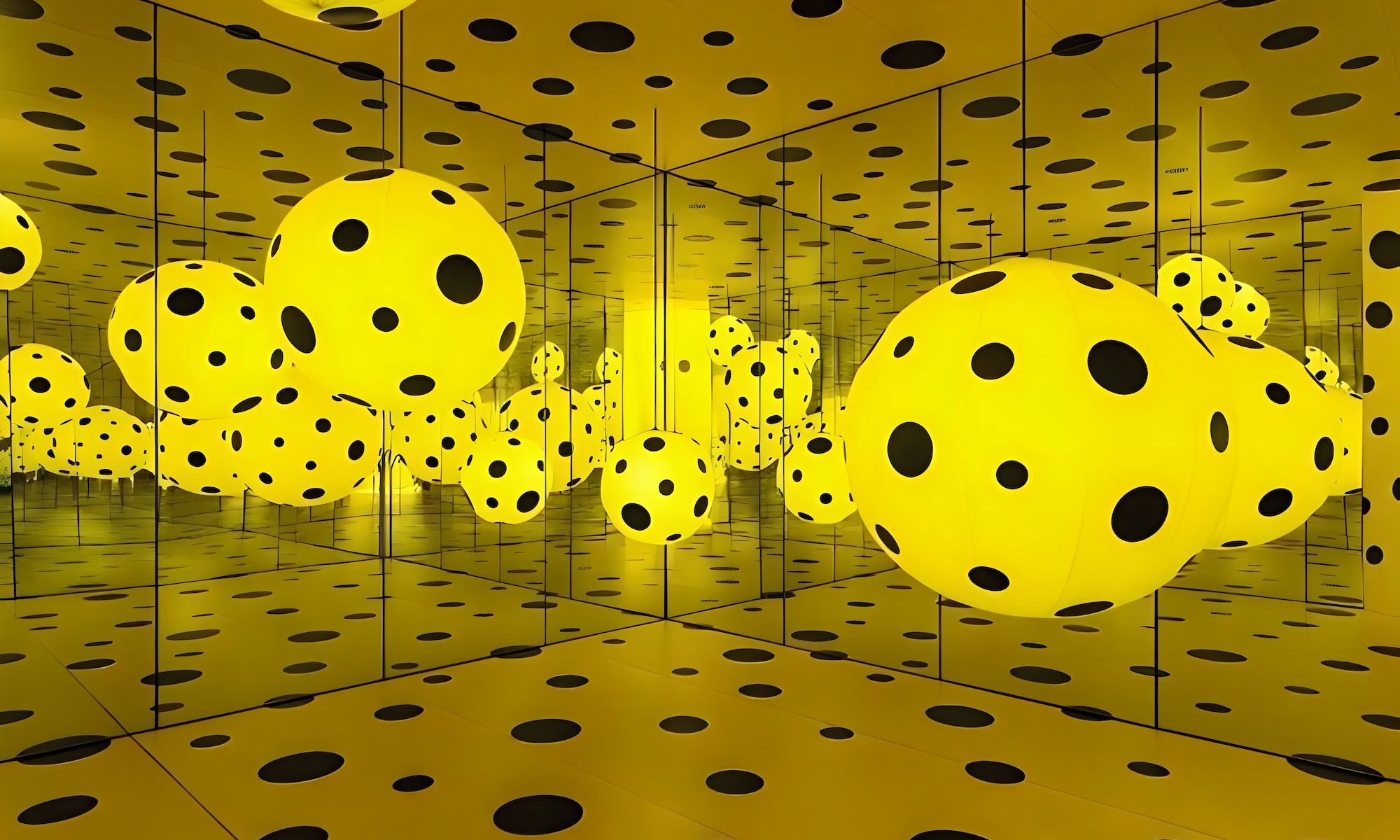Yayoi Kusama's Dots Obsession (1997), seen here in a prior installation WNDR Museum
The WNDR Museum opened in an industrial building in Chicago in 2018 with a mission of presenting multi-sensory, immersive and interactive art. Recently, the museum installed Dots Obsession (1997) by the prolific Yayoi Kusama in its 45ft-high atrium, promising to present a three-storey Infinity Mirror Room of floating black and vivid yellow polka dots. It opens to the public on 12 May.
“The expansive size of Dots Obsession excited us the most,” says David Allen, WNDR’s creative director. “This piece plays with scale. As large as it can be, a viewer is also able to peek into a tiny version of infinity as well. The process involves carefully arranging the dots within our specific space, taking into consideration the relationship between each dimensional dot, the entire environment and the viewer's experience.” During the installation, he says, two members of Kusama’s team visited from Japan and gave their blessing.
Unfortunately, the giant space is not activated to full Kusama glory. Giant yellow inflatable balls with black polka dots hover at different heights over the space (which is shared with the museum gift shop) like some funky, oversized department store holiday decorations. An open stairwell in the corner leads up to a balcony and bar. There is a small mirror room, however, situated inside a yellow orb for visitors to walk into for their 60-second experience (as per Kusama’s instructions).
Yayoi Kusama, Dots Obsession, 1997 WNDR Museum
WNDR’s other Infinity Mirror Room by the nonagenarian Japanese artist, Let’s Survive Forever (2017), on view since the museum opened, is on its way to the museum's new Boston outpost. “One of the most exciting benefits of WNDR Museum’s recent expansion to San Diego, Seattle and soon Boston is the opportunity we have to share installations between locations,” Allen says.
While this particular installation was underwhelming, there is hope that WNDR will differentiate itself from the countless ‘immersive art’ experiences popping up in most cities and provide a space for time-based, experiential projects combining art and technology projects at museum-quality levels, like Superblue in Miami.Perhaps WNDR’s real gift is the way it welcomes community and encourages creativity.The organisation operates a studio where artists and techies build and create new installations and exhibitions.
Yayoi Kusama, Let's Survive Forever, 2017 Kirsten Miccoli
“We have our own exhibits, but we also are able to collaborate with artists that want help to see an idea come to life,” Allen says. One collaboration he said the WNDR team is particularly proud of is the year-long partnership, Creatives of Color, with the New Vanguard, a Chicago-based collective made up of artists of colour.
Ryan Kunkel, the president of WNDR Global, says the organisation’s mission is to make art “accessible, approachable and inclusive”. The WNDR Museum in Boston is on schedule to open this summer and Kunkel says the company will continue to explore additional markets. He adds, “There is such a hunger to experience art in this way, and we’re really looking to bring WNDR’s unique take on art and technology to enthusiasts wherever we can.”
WNDR was founded by tech investor Brad Keywell, who was one of the co-founders of e-commerce company Groupon. His partner at Groupon was art collector and philanthropist Eric Lefkovsky, a major supporter of cultural institutions in Chicago.
The WNDR Museum's Kusama exhibition coincides with a show of new works by the artist at David Zwirner gallery in New York (until 21 July), which includes a new Infinity Mirrored Room.

